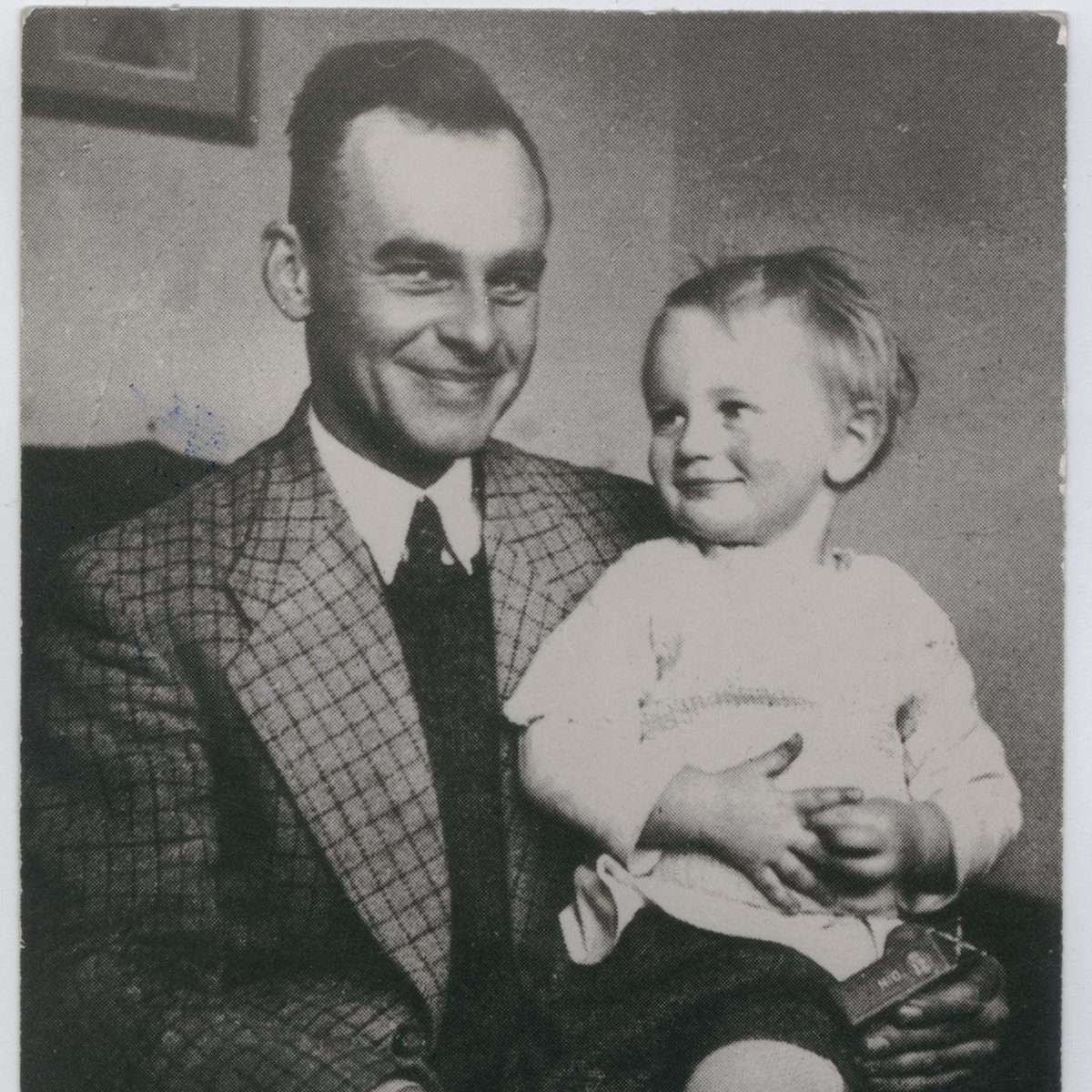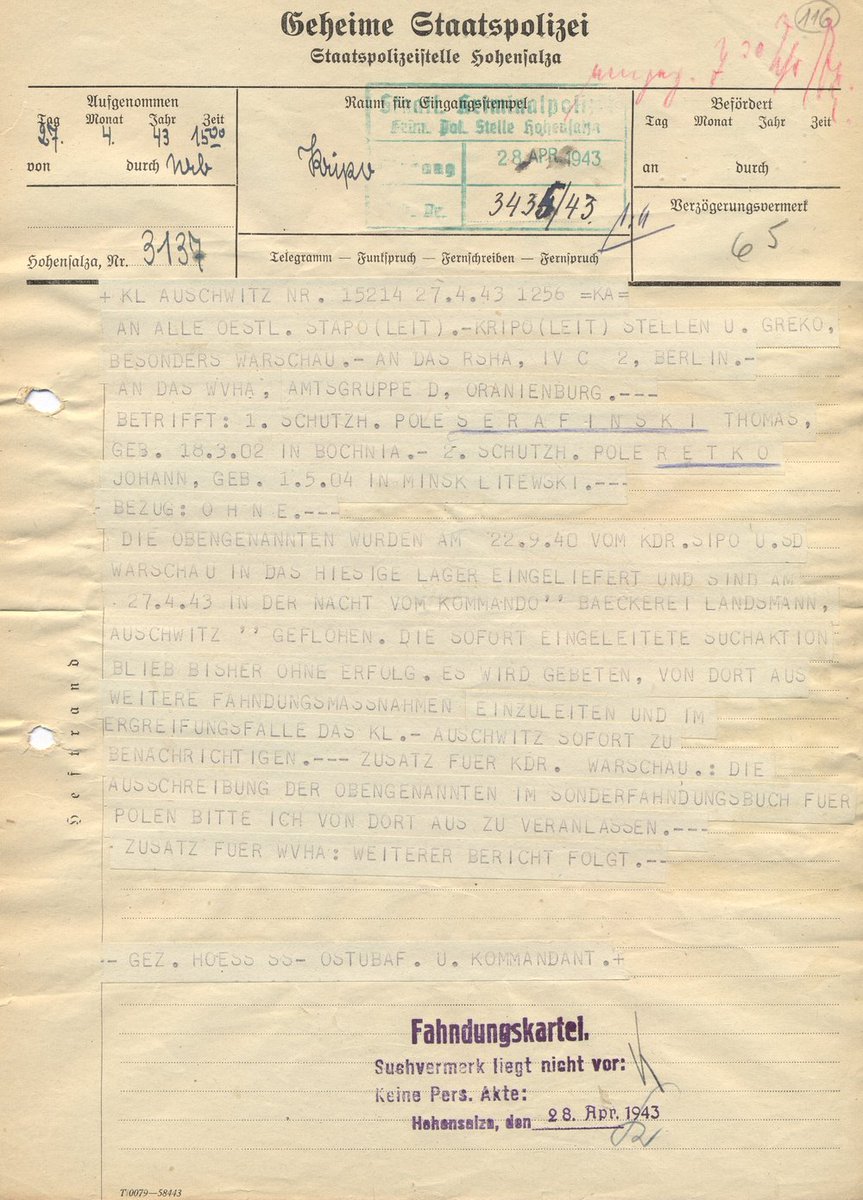WITOLD PILECKI died #OnThisDay in 1948.
Pilecki was a reserve officer in the Polish Army, born in Olonets, Russia. During WWII, while attached to a Polish resistance group, he volunteered for an operation that saw him intentionally imprisoned in Auschwitz.
Pilecki was a reserve officer in the Polish Army, born in Olonets, Russia. During WWII, while attached to a Polish resistance group, he volunteered for an operation that saw him intentionally imprisoned in Auschwitz.
As early as 1941, Pilecki’s reports informed the Western Allies of the atrocities being committed at the death camp.
Before escaping Auschwitz, he organized a resistance movement right under the noses of the camp’s Nazi German overseers, kapos and administrative staff.
Before escaping Auschwitz, he organized a resistance movement right under the noses of the camp’s Nazi German overseers, kapos and administrative staff.
On 19 September 1940, Pilecki deliberately entered an area of Warsaw where the German Army was conducting a roundup of Polish civilians. 2,000 civilians, including him, were detained by the Germans that day.
After 2 of detention in the former barracks of Poland’s Light Horse Guards, where prisoners suffered beatings with rubber truncheons, Pilecki was sent to Auschwitz and was registered with number 4859.
Since he carried false identification documents, he was registered under the name Tomasz Serafiński.
That autumn, now a prisoner, Pilecki created a new organization inside the camp called the Union of Military Organization (Związek Organizacji Wojskowej or ZOW).
That autumn, now a prisoner, Pilecki created a new organization inside the camp called the Union of Military Organization (Związek Organizacji Wojskowej or ZOW).
ZOW quickly merged with another organization operating behind the camp’s walls, under the command of Union of Armed Struggle/Home Army (Związek Walki Zbrojnej or ZWZ/AK).
This resistance organization aimed to help the morale of prisoners being held at Auschwitz by disseminating news from the fronts of World War II, clandestinely acquiring much-needed food, clothing, and medicines for the prisoners, forwarding messages from outside of the camp...
... assisting in the organization of escapes and preparing their own members to take over the camp in collaboration with the partisans operating in the area.
Reports from members of the resistance movement were initially sent via prisoners released from the camp...
Reports from members of the resistance movement were initially sent via prisoners released from the camp...
... through prisoners who managed to escape and then also by initiated civilian workers employed by the SS men during the expansion of Auschwitz.
From the beginning of 1940, these reports began to arrive systematically in Warsaw.
From the beginning of 1940, these reports began to arrive systematically in Warsaw.
The first message sent by Pilecki reached London on 18 March 1941. This document primarily contained a description of crimes committed by the Germans and the situation and living conditions in the camp.
For this reason, from the end of June 1942, one can encounter numerous references to the murder of Jews in the gas chambers and to the rapid increase in the number of registered Jewish prisoners.
The bodies of people who were killed in the gas chambers were buried in mass graves, a practice also described in the message. These people didn& #39;t even go through the registration procedure, which means that the number of victims is potentially larger than what we know today.
In 1942, Pilecki’s resistance movement was also broadcasting details on the number of arrivals and deaths in the camp and the inmates’ conditions using a secret radio transmitter that was built by camp inmates.
In the spring of 1943, after providing intelligence on the inner workings of Auschwitz to the Western Allies for close to three years, Pilecki, sensing that he could soon be exposed...
... and feeling that it was important that he submitted a first-hand report on the horrors he’d seen in the camp, decided that it was time to escape. His ZOW compatriots arranged for him to be moved to the bakers’ kommando, which worked outside the main camp (about 2 km north).
Two other prisoners with whom he intended to escape, Edward Ciesielski and Jan Redzej, were also transferred to the same Kommando.
While working at the camp’s bakery, Pilecki, Ciesielski and Redzej made their escape during the night of 26/27 April 1943.
While working at the camp’s bakery, Pilecki, Ciesielski and Redzej made their escape during the night of 26/27 April 1943.
The prisoners cut telephone and alarm ring wires, opened unlocked the front door with a duplicate key, and slid the bolts locking the door, open. As soon as they were outside of the bakery building, the trio barricaded the door that they’d just exited...
... to ensure they could not be easily followed - and ran east.
That night, they crossed the Soła river and swam across the Vistula river before reaching a nearby forest in a boat that they had managed to find.
That night, they crossed the Soła river and swam across the Vistula river before reaching a nearby forest in a boat that they had managed to find.
After a few more days of hard travel, the trio of escapees reached Nowy Wiśnicz, where they established contact with the regional Headquarters of the Home Army.
Speaking to the Home Army’s regional commanders, Pilecki suggested the creation of a unit that would attack the Nazi German SS garrison in Auschwitz and liberate the prisoners.
The regional command officers rejected Pilecki’s plan.
The regional command officers rejected Pilecki’s plan.
In August 1943, Pilecki reached Warsaw, where, at the General Headquarters of the Home Army, he presented an extensively detailed report concerning resistance activities and the disposition of prisoners in Auschwitz: the murder of Poles, Soviet POWs, and Jews...
... and the establishment of the Zigeunerlager (Gypsy camp) for Sini & Roma prisoners.
Photo: A telegram sent from the camp at 15:00 on 27 April 1943 reporting the escape.
Photo: A telegram sent from the camp at 15:00 on 27 April 1943 reporting the escape.
On 8 May 1947, after the war, Pilecki was arrested by agents of the Ministry of Public Security (Ministerstwo Bezpieczeństwa Publicznego or MBP) Poland’s post-war communist secret police service.
On 15 May, along with three of his comrades, Pilecki was sentenced to death.
On 15 May, along with three of his comrades, Pilecki was sentenced to death.
Read more: https://facesofauschwitz.com/gallery/witold-pilecki/">https://facesofauschwitz.com/gallery/w...

 Read on Twitter
Read on Twitter








